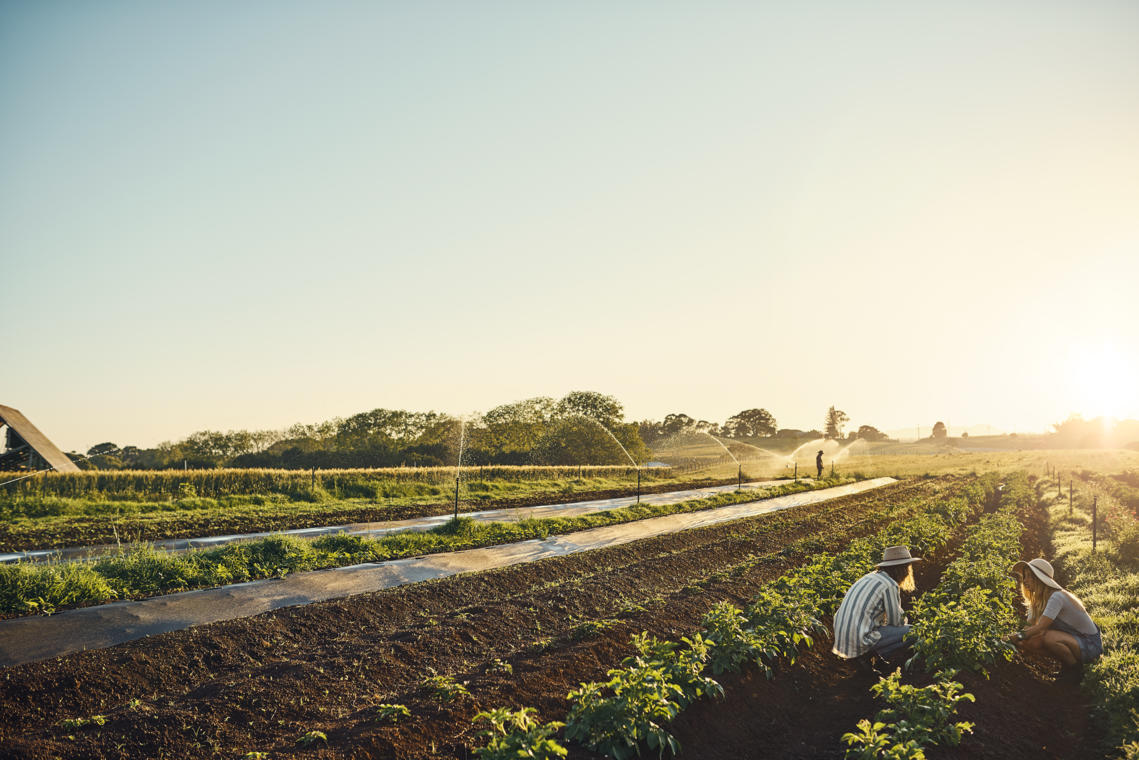Climate change mitigation, ecosystems and biodiversity protection, secure livelihoods and human rights, and health and nutrition for all should be central tenets of our global food systems. In reality, our food systems are not optimized for human and planetary health. Production and consumption – the activities at the core of our food system – are generating enormous costs for society to bear, directly challenging our ability as humans to live well today and for the generations to come. We need to better account for these impacts and correct the market – through policy, subsidies, investment and other mechanisms – where it fails to take into account the societal costs they generate.
In our first blog in this series we explore this footprint in greater depth and make the case for food system impact valuation. Here we dive deeper into the question of equity in the food system. We observe that there is a large global disparity between who receives the benefits of the production (which generates this footprint), and who pays the costs.
There are broader capital flows from poor to rich in the food system
Globally the amount of financial capital flowing from poor countries to rich countries is ten times greater than the amount of aid in the other direction. Shocks such as the current COVID-19 pandemic are compounding costs to the poor and reinforcing inequality.
Unsurprisingly, there is evidence that alongside financial capital, many of the natural, social and human capital benefits of the food system also accumulate in rich countries and demographics, while the costs are borne by poorer ones. The food system is a massive driver of inequity and replete with inequitable exchanges of natural, human and social capital alongside physical and financial flows, as described in the TEEB Agrifood Scientific and Economic Foundations report.
As an example, markets assume that the financial amount a Samoan consumer has paid for a candy bar incorporates an accurate assessment by that consumer of all the value losses to them and their community by consuming the candy. The financial return of the purchase flows through to parent companies, in the Samoan case in the US or western Europe, creating social benefits for the citizens where the parent companies pays taxes. The financial exchange has attached to it a hidden exchange of health capital in Samoa for additional human and social capital of a European or US citizen.
The economic costs and risks of inequity
In a deeply unequal world (with levels of income inequality last seen in some of the largest economies before the World Wars), the potential future costs from social unrest, corruption, political instability, institutional failure, and diminished health, productivity and social mobility, loom over a future already clouded by climate change and biodiversity loss. The mean GDP depressing effects of inequality are known malnutrition from low paid agricultural workers is estimated to be depressing the GDP of low income countries by 2%. However, like climate change, the societal risks may be far greater.
Inequality impacts organizational performance including business productivity losses. Traditional price and supply risks are likely to become more prominent. The Ivory Coast and Ghana, which produce more than 60% of the world’s cocoa, are looking to co-ordinate on cocoa pricing, citing injustice as the reason for the new cartel. This could disrupt global supply or put investments in the Ivory Coast and Ghana at risk.
On the other hand, opportunities exist for a more equitable food system. For the decades ahead, the poorest countries will continue to rely on agricultural production, with a significant opportunity to establish infrastructure to support sustainable production. There is also a large potential for growth in value-adding, in both economic and nutritional terms, by small and medium enterprise (SME) manufacturing in developing countries.
A failure of accounting
In response to the realisation of mounting effects on planet and people, and pressure from investors, the corporate sector has developed multi-capital accounting to report on a company’s impact on natural, social and human capital.
Many approaches by the business community do not capture equity concerns in capital exchanges. Given the position of the food sector as a driver of global inequity, this omission is conspicuous, and may jeopardize the legitimacy of impact reporting for the sector. Present approaches to impact valuation take negative amounts, of, say, costs from natural capital loss, and offset them by positive amounts, of, say, benefits from social capital gain, and add them together without considering substitutability of capital. This is a flawed approach to non-financial accounting.
The approaches separate out net environmental costs and net social benefits before calculating totals. However, there is normally little or no indication of where and to whom the main environmental costs are incurred versus where and to whom the main social benefits occur. It remains unexplained in present methodology why, say, natural capital negative externalities in a developing country is offset by social capital positive externalities in a developed country.
Impact investors will begin to take note of this lack of explanation and estimation. Without understanding where costs and benefits are incurred the change in impact is unknown, despite a ‘total value’ indicating positive impact. The negative impacts may still be occurring where marginal impacts are exacerbating already accumulated capital loss. The positive impacts are still occurring where social improvements marginally enrich a society, likely already rich in social and human capital. Only on paper have the negative and the positive cancelled each other.
The accounting should indicate if social benefits occur in the same community experiencing natural capital costs, which offers the possibility that some benefits offset some costs. The accounting should indicate if there is a considerable distance between the costs and benefits, and as a result substitutability of capital becomes much less clear. A financial reporting community genuinely embracing a ‘multi-capital approach’ should be able to track the ‘trades’ in different capital classes linked to the largest inequities.
A way forward for reporting equity
The “Valuing the Impact of Food” report published by the Food System Impact Valuation Initiative, with support from WBCSD and several member companies, argued for a spatially, contextually, and temporally explicit model of food system activities linked to sources and receivers of positive and negative impacts. The resolution is still at a practical level that companies can disclose the footprints incurred in food sector activities. Matching such reporting to the model enables the generation of statistics for the value of the capital exchanges in a company’s activities and value chain.
Specifically, the statistics are measures of inequity, like the Gini index. They measure distance between capital gains and losses across at least four dimensions:
- The first statistic, called the socio-economic spatial (SES) statistic, reflects capital exchanges across national economies and levels of socio-economic development.
- The second statistic, called the socio-economic temporal (SET) statistic, reflects capital exchanges across generations.
- The third statistic, called the capital exchange risk (CER) statistic, reflects where more certain costs are exchanged for uncertain benefits. Future benefits are not always realised. For example, corporate social initiatives and new infrastructure that is not delivered, while present natural costs such as water pollution are usually directly observed and incurred with certainty.
- The fourth statistic, called GRS, relates disparity in the gender and race of receivers of positive impacts compared to negative impacts.
Conclusion
If multi-capital accounting continues to gain traction, tracking capital exchanges at the practical resolution proposed in the report would offer a powerful tool for food sector companies and investors to gain insights into impact, risk, and inequity.
Equity statistics would address a glaring gap in multi-capital accounting and increase assurance to impact investors that investments are contributing toward food system transformation targets with the least social harm while reducing capital risks.
This blog is based on Section 9: Implications of the “Valuing the Impact of Food” report of the Food System Impact Valuation Initiative (FoodSIVI). FoodSIVI is hosting a webinar on costing the impact of food on 21 September 2020. Read the full report at foodsivi.org/what-we-do/publications/








